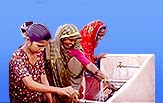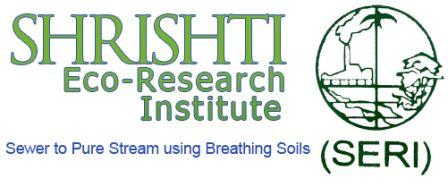India
Operation and maintenance for rural water supplies – A manual by Department of Drinking Water and Sanitation and the Water and Sanitation Program of World Bank
Posted on 17 Apr, 2011 07:23 AM This Operation and Maintenance (O&M) manual for rural water supplies by the Department of Drinking Water And Sanitation and Water and Sanitation Program of the World Bank complements their Gram Panchayat Handbook released in 2010 . It takes into account the current aspirations and challenges facing the sector, and builds on the framework already set out in the National Rajiv Gandhi Drinking Water Programme (NRDWP) and Strategic Plan 2011-2022.
This Operation and Maintenance (O&M) manual for rural water supplies by the Department of Drinking Water And Sanitation and Water and Sanitation Program of the World Bank complements their Gram Panchayat Handbook released in 2010 . It takes into account the current aspirations and challenges facing the sector, and builds on the framework already set out in the National Rajiv Gandhi Drinking Water Programme (NRDWP) and Strategic Plan 2011-2022.
Transparent & participatory governance in functioning of the decision-making committees on water resources
Posted on 16 Apr, 2011 03:46 PMTo
Shri Salman Khurshid,
Union Minister of Water Resources,
Shramshakti Bhawan,
Rafi Marg,
New Delhi - 110001
2. Secretary, Union Ministry of Water Resources
3. Chairman, Central Water Commission
4. Deputy Chairman, Planning Commission
5. Member (Water), Planning Commission
6. Ms Aruna Roy, Chairperson, Working Group on Transparency, Accountability, Governance at National Advisory Council
Demography and development: Preliminary interpretations of the 2011 Census - EPW Articles
Posted on 16 Apr, 2011 11:34 AMLiteracy rates have increased sharply between 2001 and 2011; some of the low performing rates have shown strong improvements, the others have not. The dismal picture in the 2011 Census is that even as the overall sex ratio has improved due to better adult female mortality that of the child sex ratio has further deteriorated.
Maharashtra gifts farmers’ water to industries - Dams, Rivers and People - Newsletter from SANDRP of March 2011
Posted on 15 Apr, 2011 08:45 AM- Maharashtra gifts farmers’ water to industries
Between 2005 & 2010, a High Powered Committee was constituted by the Maharashtra Minister for Water Resources which recommended the diversion of 1500 MCM water from 38 dams across Maharashtra to cities and industries.
CPCB announces awards scheme for writing books in Hindi about pollution control and environmental planning and management (2011)
Posted on 15 Apr, 2011 01:24 AMप्रदुषण नियंत्रण और पर्यावरण योजना एवं प्रबंधन से सम्बंधित विषयों पर हिंदी में मौलिक पुस्तक लेखन के लिए पुरस्कार योजना वर्ष - २०११
अधिक जानकारी के लिए, फाइल अटैचमेंट देखे:
Arsenic and chromium hyper-accumulation by an ecotype of Pteris vittata - Possibility of remediation of contaminated water and soil – A paper in Current Science
Posted on 14 Apr, 2011 08:04 PM This study by National Environmental Engineering Research Institute published in Current Science was carried out to identify Pteris vitta and test its hyper-accumulating properties. The plant is commonly known as the Ladder brake fern or Chinese brake fern plant in India, and had been reported elsewhere as an arsenic hyper-accumulator.
This study by National Environmental Engineering Research Institute published in Current Science was carried out to identify Pteris vitta and test its hyper-accumulating properties. The plant is commonly known as the Ladder brake fern or Chinese brake fern plant in India, and had been reported elsewhere as an arsenic hyper-accumulator.
.The remediation of arsenic and chromium contaminated soil and water has become an important environmental issue. It is in this context that the discovery of hyper-accumulator plant species, which have the unusual ability of accumulating metals such as arsenic (As), chromium (Cr), zinc (Zn), nickel (Ni) and copper (Cu) to very high concentrations, has further boosted technologies based on this property.
This is the first report of characterization of arsenic accumulation in an Indian ecotype (plant), which also shows chromium hyperaccumulation in addition to arsenic. Intact plantlets were grown in 20 per cent Hoagland solution amended with up to 200 mg arsenic or chromium medium. Plants absorbed and accumulated a significant amount of arsenic and chromium in their biomass with high bio-enrichment factor. Arsenic and chromium tolerance by spores and gametophytes under in-vitro was also assessed.
Farming practices in different water regimes: Action - Newsletter of AFPRO for April 2011
Posted on 14 Apr, 2011 07:22 PMMoRD announces relaxation in NRDWP guidelines: Sustainability component to be reduced to 10% for 2010-11 and 2011-12
Posted on 14 Apr, 2011 05:54 PMThe MoRD has through this order, announced that this will be relaxed to 10% NRDWP funds, on a 100% Central share basis for all States.
This relaxation would be valid for 2010 – 11 and 2011 – 12. The balance 10% of NRDWP funds that will become available is to be spent on coverage of quality affected and / or non – quality affected habitations, on a 50:50 sharing basis.
Shrishti Eco-Research Institute (SERI) is looking for Environmental Officer & Engineer based at Pune
Posted on 14 Apr, 2011 04:50 PM We have vacancies for the post of Environmental Officer & Engineer at Shrishti Eco-Research Institute (SERI), Pune.
We have vacancies for the post of Environmental Officer & Engineer at Shrishti Eco-Research Institute (SERI), Pune.
The candidate should be dynamic and have confidence, command over English language (both speaking & writing) and willing to travel.
Educational qualification - Post Graduate
Discipline - Science/Engineering
Distributional implications of climate change in India – A policy research working paper by World Bank
Posted on 14 Apr, 2011 03:49 PMThis working paper by World Bank analyzes how changes in the prices of land, labor, and food induced by modest temperature increases over the next three decades will affect household-level welfare in India.